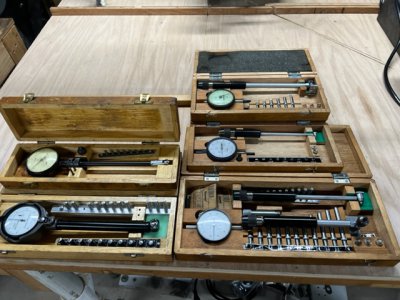LED's work the same way if they use the typical (and easy) approach of putting the LED in series with a resistor, whose job it is to pull the prescribed amount of current (usually 15 or 20 milliamps) through the LED.That’s one of the reasons cars switched to alternators. If he had a generator system the voltage could have been fluctuating with engine speed. Don’t know for sure if this is the case with LED’s but certainly so with incandescent bulbs.
Either way it got your attention which is the point
John
Model A's originally used a cut-out relay to make sure that the battery didn't turn the generator into an energized motor when the engine was not running--it cuts out the battery when the generator output voltage is less than the battery voltage. The generator is current-limited using a third brush, and that is set based on the number of electrical devices in usual use (particularly the headlamps). LED's produce so little current drain that it wouldn't even be noticed by the original charging system. If the third brush is set for headlight use, the generator will often cook the battery at cruise RPM when the headlights are off. As I understand it, most Model A owners have replaced the cutout with a true voltage regulator packaged to look like the cutout, or they use an alternator with internal regulation that is packaged to look like the original generator.
Alternators in some applications will also let the voltage sag at idle, depending on the design of the voltage regulator. My old Toyota trucks don't kick the alternator in with battery-charging current until about 1500 RPM, for example. The traditional three-wire alternator in my 1973 GMC motorhome (which is closer in technology and chronology to a Model A than it is to any modern vehicle) uses a separate voltage-sensing circuit, downstream of a typical RV-style battery isolator, to adjust the regulator output. Doing so minimized sagging at idle, but could also allow alternator runaway if that battery isolator ever failed open. Many of us have replaced the isolator with a combiner that doesn't impose a diode voltage drop, and put the voltage sensing circuit closer to the alternator output. Most have also installed a diode right at the alternator output to bypass the battery isolator if it fails open. Runaway voltage causes fires.
Rick "fun with electrons" Denney

